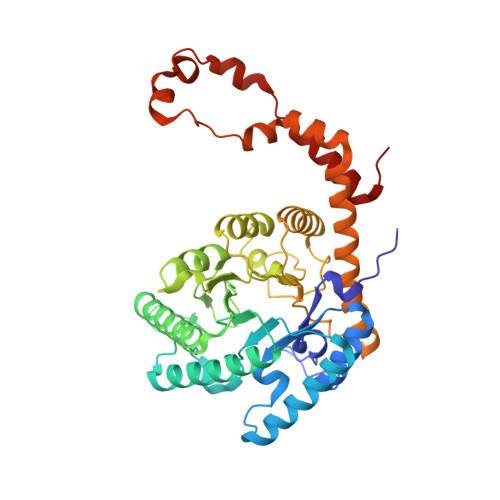Metal ion roles and the movement of hydrogen during reaction catalyzed by D-xylose isomerase: a joint x-ray and neutron diffraction study.
Kovalevsky, A.Y., Hanson, L., Fisher, S.Z., Mustyakimov, M., Mason, S.A., Forsyth, V.T., Blakeley, M.P., Keen, D.A., Wagner, T., Carrell, H.L., Katz, A.K., Glusker, J.P., Langan, P.(2010) Structure 18: 688-699
- PubMed: 20541506
- DOI: https://doi.org/10.1016/j.str.2010.03.011
- Primary Citation of Related Structures:
3KBM, 3KBN, 3KBS, 3KBV, 3KBW, 3KCL, 3KCO - PubMed Abstract:
Conversion of aldo to keto sugars by the metalloenzyme D-xylose isomerase (XI) is a multistep reaction that involves hydrogen transfer. We have determined the structure of this enzyme by neutron diffraction in order to locate H atoms (or their isotope D). Two studies are presented, one of XI containing cadmium and cyclic D-glucose (before sugar ring opening has occurred), and the other containing nickel and linear D-glucose (after ring opening has occurred but before isomerization). Previously we reported the neutron structures of ligand-free enzyme and enzyme with bound product. The data show that His54 is doubly protonated on the ring N in all four structures. Lys289 is neutral before ring opening and gains a proton after this; the catalytic metal-bound water is deprotonated to hydroxyl during isomerization and O5 is deprotonated. These results lead to new suggestions as to how changes might take place over the course of the reaction.
Organizational Affiliation:
Bioscience Division, Los Alamos National Laboratory, MS M888, Los Alamos, NM 87545, USA. ayk@lanl.gov















